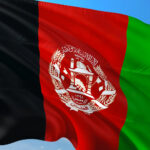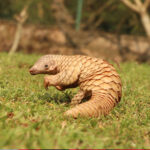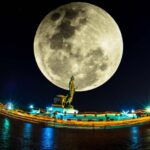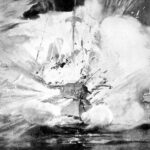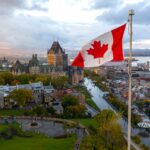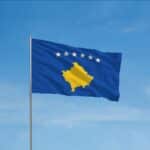Liberation Day in Afghanistan is celebrated on February 15 every year to commemorate the final departure of the Soviet army from the country on the same date in 1989. The Soviet-Afghan war was fought for nearly 10 years, and close to 2 million Afghani civilians were killed in the conflict. The Soviet-Afghan war was a Cold War-era proxy war fought between the Soviet Army and the Mujahideen, backed by the U.S., the U.K., China, Iran, Pakistan, and Saudi Arabia. By the end of the war in 1989, Afghanistan had lost close to 11.5% of its population. Plus, seven million Afghans had become either internally displaced persons or refugees in countries such as Pakistan.
History of Liberation Day Afghanistan
The history of Liberation Day in Afghanistan is the history of the Soviet-Afghan war, which began with the 1978 Saur Revolution. The revolution was a coup that toppled President Mohammed Daoud Khan’s autocratic government and led to the coming to power of the Marxist People’s Democratic Party of Afghanistan (P.D.P.A.). When the P.D.P.A. came to power, they formed the Democratic Republic of Afghanistan, and Nur Muhammad Taraki became its first Prime Minister. Later that year, on December 5, Afghanistan signed a treaty of friendship with the Soviet Union.Due to the radical reforms introduced by the Taraki-led government, a rebellion broke out across the country, and by 1979, the country was in full-blown civil war. In September 1979, the deputy Prime Minister, Hafizullah Amin, had Nur Mohammad Taraki assassinated and assumed the leadership of the country. But the Soviet government was unhappy about this development, and the possible plans of Afghanistan defecting to the U.S.’s side forced the Soviet Army to invade the country on December 24, 1979. Amin was killed on December 27, and Babrak Kamal was installed as Prime Minister. That effectively started the Soviet-Afghan war.This invasion of Afghanistan shocked the world, and the U.S.S.R received condemnations from various Islamic countries, including the West. In 1980, the U.N. General Assembly passed a resolution by a majority of 104 to 18, protesting the Soviet intervention. With that, the Mujahideen rebels began receiving support in the form of military training, finance, and aid, prominently from Pakistan, with help from the U.S., U.K., China, and Arab nations.After close to 9 years of war with the Mujahideen rebels, the Soviet Union began withdrawing its troops from Afghanistan on May 15, 1988. By February 15, 1989, the Soviet government had withdrawn all its troops and left the Afghanistan government alone to battle the rebels. That marked the end of the Soviet involvement in Afghanistan.Most historians and experts saw the war as one of the significant factors that contributed to the collapse of the Soviet Union and caused the U.S. to start its own war in Afghanistan in 2001.
Liberation Day Afghanistan timeline
The Mohammed Daoud Khan-led government is toppled and the P.D.P.A. takes control of the country.
The Soviet Army invades Afghanistan, kills the Prime Minister, and installs Babrak Karmal, which effectively starts the Soviet-Afghan War.
The Soviet Union announces that it will start withdrawing its army from Afghanistan after reaching an agreement with the Afghani government
The Soviet Union finalizes the withdrawal of its troops from Afghanistan, marking the end of the Soviet-Afghan War.
Liberation Day Afghanistan FAQs
Why was Afghanistan known as the Soviet Union’s Vietnam?
That was because the Soviet Union’s army was trapped in Afghanistan for close to a decade, expending resources with no possibility of success or an end in sight.
Why did the Soviets lose in Afghanistan?
According to experts, the Soviets lost in Afghanistan primarily as a result of poor military strategy and tactics, ineffective Afghani government, and Mujahideen’s foreign support from Pakistan and the United States.
Why is Afghanistan so difficult to conquer?
Afghanistan is difficult to conquer because of its unforgiving mountainous and hilly terrains. The local knowledge of the terrain made it easy for rebels to fight guerilla wars with invading armies.
How to Observe Liberation Day Afghanistan
-
Read the history of the Cold War
Like we mentioned in the history of Liberation Day, the Soviet-Afghan War was one of the Cold War proxy wars fought between the United States and the Soviet Union. By reading the history of the Cold War, you will understand why the U.S. intervened, and the early beginnings of the Afghani Islamic fundamentalism that eventually led to 9/11.
-
Watch movies on the Soviet-Afghan War
Many movies focused on the Soviet-Afghan War or included scenes of the war. You can watch classics like the Kite Runner, Earth and Ashes, 9th Company, and Afghan Breakdown. If you prefer, you can watch newer ones like Leaving Afghanistan.
-
Explore the history of Afghanistan
Afghanistan had a rich and beautiful history before the rise of communism and Islamic fundamentalism. Many nations have tried to conquer it throughout its long history, and most have failed, including Alexander the Great, the British, the Soviet Union, and the United States. Exploring the history of Afghanistan will help you understand why it’s so difficult to conquer and the events that led to the country being what it is today.
5 Fascinating Facts About The Soviet-Afghan War
-
The conflict was a Cold War-proxy war
The Soviet-Afghan War was one of many Cold War proxy wars fought between the communist Soviet Union, the democratic United States, and their respective allies.
-
The war destroyed most of Afghanistan’s infrastructure
The Soviet-Afghan War turned Afghanistan into one of the poorest and most underdeveloped countries in the world.
-
It’s known as the Soviet’s Vietnam War
Due to the length of the war, the casualties on both sides, and how the Soviet Union was harried out of Afghanistan, the Soviet-Afghan War became known as the ‘Soviet Union’s Vietnam War.’
-
Many Afghans lost their lives
About 6.5% to 11.5%, which was 562,000 to 2,000,000 Afghans lost their lives in the conflict.
-
It ended the Soviet Union
Experts viewed the Soviet-Afghan War as one of the contributing factors to the fall of the Soviet Union in 1992.
Why Liberation Day Afghanistan is Important
-
It marks the end of the Soviet Union’s occupation in Afghanistan
The Soviet army was first invited to quell the rebellion in the country, and then they invaded in 1979 to overthrow the government and caused a full-blown war. By the end of their occupation, Afghanistan’s infrastructure had been utterly destroyed, and close to two million Afghans had died. The end of the Soviet occupation gave the Afghans the liberty to decide their fates.
-
The Soviet-Afghan War contributed to an end to the spread of communism
The Soviet-era communism was that of disregard for human rights and large-scale socio-economic engineering that led to the death of millions. A few years after the Soviet army withdrew from Afghanistan, the Soviet Union collapsed, halting communism and ending the Cold War.
-
The Soviet-Afghan War contributed to the fall of the Soviet Union
The Soviet Union is a conglomeration of countries, including Russia, Ukraine, Poland, East Germany, Lithuania, and Romania. A single authoritarian government directed the people’s lives in these countries from Moscow, and little to no freedom was allowed. With the fall of the Soviet Union, each country under the U.S.S.R. became independent and adopted democratic rule. Many are now among the best countries in the world.
Liberation Day Afghanistan dates
| Year | Date | Day |
|---|---|---|
| 2023 | February 15 | Wednesday |
| 2024 | February 15 | Thursday |
| 2025 | February 15 | Saturday |
| 2026 | February 15 | Sunday |
| 2027 | February 15 | Monday |








